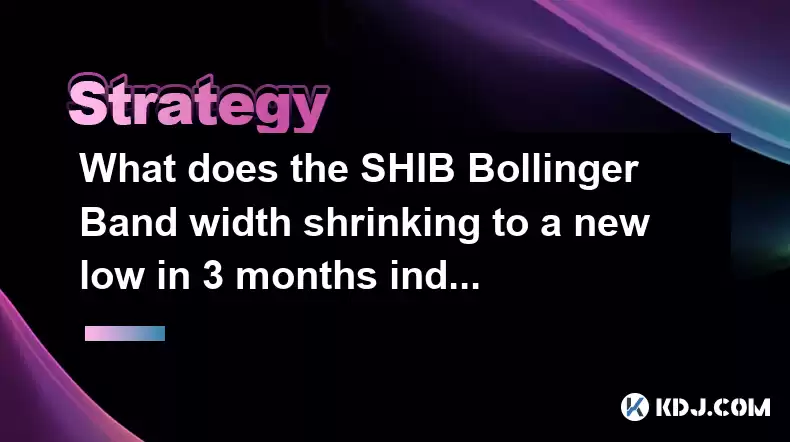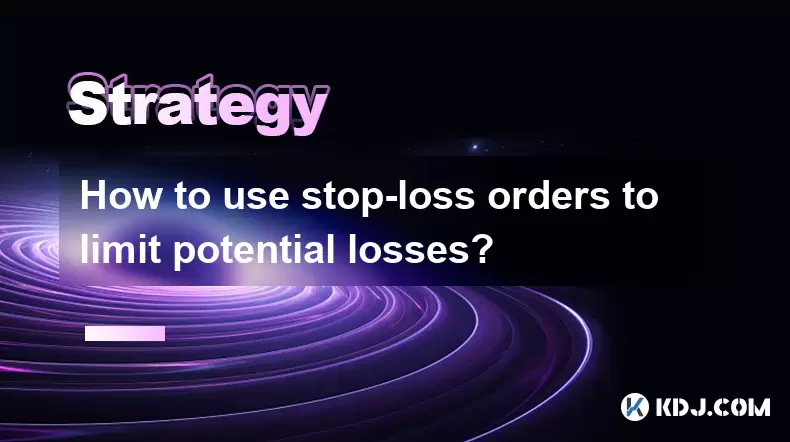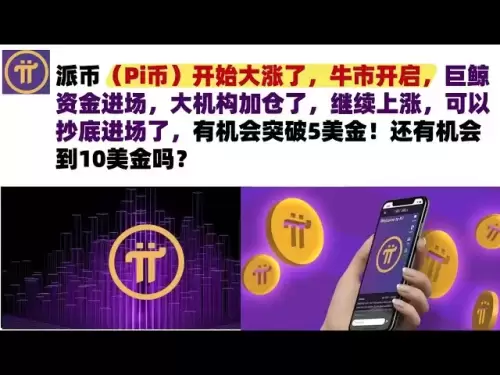-
 Bitcoin
Bitcoin $116700
0.48% -
 Ethereum
Ethereum $4213
6.27% -
 XRP
XRP $3.280
1.22% -
 Tether USDt
Tether USDt $1.000
0.02% -
 BNB
BNB $805.1
2.46% -
 Solana
Solana $180.2
2.65% -
 USDC
USDC $0.0000
0.02% -
 Dogecoin
Dogecoin $0.2412
8.50% -
 TRON
TRON $0.3356
-1.11% -
 Cardano
Cardano $0.8108
3.59% -
 Hyperliquid
Hyperliquid $43.89
8.53% -
 Chainlink
Chainlink $21.15
10.75% -
 Stellar
Stellar $0.4502
1.41% -
 Sui
Sui $3.935
4.69% -
 Bitcoin Cash
Bitcoin Cash $570.7
-1.75% -
 Hedera
Hedera $0.2636
3.28% -
 Avalanche
Avalanche $24.25
4.48% -
 Ethena USDe
Ethena USDe $1.001
0.03% -
 Litecoin
Litecoin $122.0
-0.08% -
 Toncoin
Toncoin $3.445
2.68% -
 UNUS SED LEO
UNUS SED LEO $8.979
-0.08% -
 Shiba Inu
Shiba Inu $0.00001379
6.73% -
 Uniswap
Uniswap $10.91
2.00% -
 Polkadot
Polkadot $4.106
5.39% -
 Dai
Dai $1.000
0.02% -
 Pepe
Pepe $0.00001227
9.07% -
 Bitget Token
Bitget Token $4.507
0.72% -
 Cronos
Cronos $0.1576
3.40% -
 Monero
Monero $272.0
-1.68% -
 Ethena
Ethena $0.7502
21.27%
What does the SHIB Bollinger Band width shrinking to a new low in 3 months indicate?
SHIB's Bollinger Band width shrinking to a 3-month low signals low volatility, often preceding a significant price movement; traders should prepare for potential breakouts.
Apr 20, 2025 at 05:00 am

The SHIB Bollinger Band width shrinking to a new low in 3 months is an important technical indicator that traders and investors closely monitor to gauge the potential future movements of the cryptocurrency. This phenomenon can provide insights into the current market conditions and help in making informed trading decisions. Let's delve deeper into what this shrinking width indicates and how it can be interpreted in the context of SHIB's price movements.
Understanding Bollinger Bands
Bollinger Bands are a popular technical analysis tool created by John Bollinger. They consist of three lines: a simple moving average (SMA) in the middle, and an upper and lower band that are typically set two standard deviations away from the SMA. The width of the Bollinger Bands is determined by the volatility of the asset; when the bands are wide, it indicates high volatility, and when they are narrow, it suggests low volatility.
What Does Shrinking Bollinger Band Width Indicate?
When the Bollinger Band width shrinks to a new low, it signifies that the volatility of SHIB is decreasing. This narrowing of the bands often precedes a significant price movement. Traders interpret this as a sign that the market is consolidating and that a breakout could be imminent. The direction of the breakout, however, cannot be predicted solely based on the Bollinger Bands and requires additional analysis.
Historical Context of SHIB's Bollinger Band Width
In the context of SHIB, the Bollinger Band width shrinking to a new low in 3 months is particularly noteworthy. This indicates that the market has been experiencing a period of relative calm, with less price fluctuation compared to the previous three months. Such a scenario can be seen as a precursor to a potential price breakout, either upwards or downwards.
Analyzing the Implications for SHIB
The shrinking Bollinger Band width for SHIB suggests that the cryptocurrency is currently in a consolidation phase. During such phases, the price tends to move within a tight range, which can lead to a build-up of tension in the market. When this tension is released, it often results in a significant price movement. Traders should be prepared for either a bullish or bearish breakout and should use other technical indicators and market analysis tools to predict the direction of the move.
Strategies for Trading SHIB Based on Bollinger Bands
Traders can employ several strategies when they observe the Bollinger Band width shrinking. Here are some approaches:
Breakout Strategy: This involves waiting for the price to break above the upper Bollinger Band or below the lower Bollinger Band. A breakout above the upper band could signal a bullish trend, while a breakout below the lower band might indicate a bearish trend.
Bollinger Band Squeeze: This strategy focuses on the period of low volatility before a breakout. Traders look for the bands to start widening again as an early sign of an impending move.
Combining with Other Indicators: To increase the reliability of the signals, traders often combine Bollinger Bands with other indicators such as the Relative Strength Index (RSI), Moving Average Convergence Divergence (MACD), or volume indicators.
Practical Steps to Monitor SHIB's Bollinger Band Width
To effectively monitor the SHIB Bollinger Band width, traders can follow these steps:
Select a Reliable Trading Platform: Use a platform that provides access to advanced charting tools and technical indicators.
Set Up Bollinger Bands: Add Bollinger Bands to your SHIB chart with a typical setting of a 20-day SMA and two standard deviations.
Monitor the Width: Regularly check the width of the Bollinger Bands. You can calculate the width by subtracting the lower band value from the upper band value and dividing by the middle band value.
Watch for Shrinking Width: Pay attention to when the width reaches new lows, as this could signal an upcoming breakout.
Prepare for Breakouts: Be ready to act quickly when a breakout occurs, using other indicators to confirm the direction of the move.
Interpreting the Shrinking Width in the Broader Market Context
While the shrinking Bollinger Band width is a significant indicator, it should not be analyzed in isolation. The broader market context, including overall cryptocurrency market trends, news events, and macroeconomic factors, can influence SHIB's price movements. For instance, if the entire crypto market is experiencing a period of low volatility, the shrinking width of SHIB's Bollinger Bands might be part of a larger market trend.
Using Bollinger Bands in Conjunction with Fundamental Analysis
While technical indicators like Bollinger Bands are crucial for short-term trading, they should be complemented with fundamental analysis for a more comprehensive understanding of SHIB's potential movements. Fundamental factors such as the project's development updates, partnerships, and community sentiment can provide additional insights into the cryptocurrency's long-term prospects.
Case Studies of Bollinger Band Width Shrinking in Cryptocurrencies
To better understand the implications of shrinking Bollinger Band width, let's look at a few case studies of similar occurrences in other cryptocurrencies:
Bitcoin (BTC): In early 2020, Bitcoin's Bollinger Band width reached an all-time low, which was followed by a significant bullish breakout. This led to a substantial increase in Bitcoin's price throughout the year.
Ethereum (ETH): In late 2019, Ethereum experienced a period of low volatility, with the Bollinger Band width shrinking significantly. This was followed by a bullish breakout in early 2020, contributing to Ethereum's price surge.
These case studies illustrate that a shrinking Bollinger Band width can often precede significant price movements, although the direction of the move can vary.
Frequently Asked Questions
Q: How often should I check the Bollinger Band width for SHIB?
A: It is advisable to check the Bollinger Band width daily, especially during periods of low volatility. This allows you to stay updated on potential breakouts and adjust your trading strategy accordingly.
Q: Can Bollinger Bands predict the direction of SHIB's price movement?
A: Bollinger Bands alone cannot predict the direction of a price movement. They indicate potential volatility changes and breakouts, but traders should use additional indicators and market analysis to determine the likely direction of the move.
Q: Is the Bollinger Band width shrinking a reliable indicator for all cryptocurrencies?
A: While the Bollinger Band width shrinking is a widely used indicator, its reliability can vary across different cryptocurrencies. It is most effective when used in conjunction with other technical and fundamental analysis tools.
Q: What other technical indicators should I use with Bollinger Bands for SHIB?
A: Some effective indicators to use alongside Bollinger Bands for SHIB include the Relative Strength Index (RSI), Moving Average Convergence Divergence (MACD), and volume indicators. These can help confirm signals and provide a more comprehensive view of the market.
Disclaimer:info@kdj.com
The information provided is not trading advice. kdj.com does not assume any responsibility for any investments made based on the information provided in this article. Cryptocurrencies are highly volatile and it is highly recommended that you invest with caution after thorough research!
If you believe that the content used on this website infringes your copyright, please contact us immediately (info@kdj.com) and we will delete it promptly.
- Trump, Crypto Vehicle, and WLFI Tokens: A New York Minute on the Latest Buzz
- 2025-08-10 00:30:12
- Wheat Penny Fortune: Unearthing Valuable Coins in Your Pocket Change
- 2025-08-10 00:35:19
- AI Coin Mania: Dubai Millionaires Eye 20x Gains!
- 2025-08-09 23:10:12
- ChatGPT's Hot Takes: Meme Coins to Buy Now for a Wild 2025!
- 2025-08-09 23:10:12
- Jurassic Park Vibes in Your Pocket: The Colourful Canadian Coin Featuring a Dinosaur Eye
- 2025-08-09 23:50:12
- Altcoins on the Radar: VeChain, Ethereum, and the Shifting Crypto Landscape
- 2025-08-09 23:50:12
Related knowledge

How to use stop-loss orders to limit potential losses?
Aug 08,2025 at 02:01pm
Understanding Stop-Loss Orders in Cryptocurrency TradingA stop-loss order is a risk management tool used by traders to automatically sell a cryptocurr...

How to read cryptocurrency charts and use technical analysis?
Aug 08,2025 at 11:08am
Understanding the Basics of Cryptocurrency ChartsCryptocurrency charts are graphical representations of price movements over time. These charts are es...

How to do your own research (DYOR) before investing in a crypto project?
Aug 08,2025 at 09:07pm
Understanding the Core Principles of DYOR in CryptocurrencyEngaging in due diligence before investing in any cryptocurrency project is essential to mi...

How to build a diversified crypto portfolio?
Aug 09,2025 at 12:21pm
Understanding the Importance of Diversification in CryptoDiversification in the cryptocurrency space is a strategy used to reduce risk by spreading in...

How to avoid common crypto investment mistakes?
Jul 13,2025 at 01:35am
Understanding the Risks of Crypto InvestmentInvesting in cryptocurrency can be highly rewarding, but it also comes with significant risks. One of the ...

What is a long-short crypto strategy?
Jul 15,2025 at 10:56am
Understanding the Basics of a Long-Short Crypto StrategyA long-short crypto strategy is an investment approach where traders simultaneously take long ...

How to use stop-loss orders to limit potential losses?
Aug 08,2025 at 02:01pm
Understanding Stop-Loss Orders in Cryptocurrency TradingA stop-loss order is a risk management tool used by traders to automatically sell a cryptocurr...

How to read cryptocurrency charts and use technical analysis?
Aug 08,2025 at 11:08am
Understanding the Basics of Cryptocurrency ChartsCryptocurrency charts are graphical representations of price movements over time. These charts are es...

How to do your own research (DYOR) before investing in a crypto project?
Aug 08,2025 at 09:07pm
Understanding the Core Principles of DYOR in CryptocurrencyEngaging in due diligence before investing in any cryptocurrency project is essential to mi...

How to build a diversified crypto portfolio?
Aug 09,2025 at 12:21pm
Understanding the Importance of Diversification in CryptoDiversification in the cryptocurrency space is a strategy used to reduce risk by spreading in...

How to avoid common crypto investment mistakes?
Jul 13,2025 at 01:35am
Understanding the Risks of Crypto InvestmentInvesting in cryptocurrency can be highly rewarding, but it also comes with significant risks. One of the ...

What is a long-short crypto strategy?
Jul 15,2025 at 10:56am
Understanding the Basics of a Long-Short Crypto StrategyA long-short crypto strategy is an investment approach where traders simultaneously take long ...
See all articles

























































































